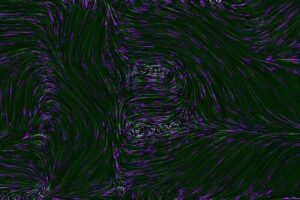 Since the invention of the first fiber laser module, these systems have found a range of applications in a number of scientific studies related to biology, chemistry, astronomy, etc. In the future, scientists are going to develop more contemporary fiber lasers due to the challenges of the modern world. Nowadays, fiber laser systems participate in a number of various field experiments from triggering lightning in thunderclouds to genomics.
Since the invention of the first fiber laser module, these systems have found a range of applications in a number of scientific studies related to biology, chemistry, astronomy, etc. In the future, scientists are going to develop more contemporary fiber lasers due to the challenges of the modern world. Nowadays, fiber laser systems participate in a number of various field experiments from triggering lightning in thunderclouds to genomics.
Advantages of the fiber laser systems
A fiber laser is a well-structured compact laser that provides high electrical and optical efficiency. Fiber lasers are reliable and capable of delivering well-controlled and accurately directed laser beams. By amplifying specific wavelengths inside optical fibers specialists are able to design a fiber laser system with excellent beam quality and high peak energy.
Lasers are not intended to be light sources as illumination devices. However, they are good at light concentrating in space or particular wavelengths. The majority of laser applications can be divided into three segments:
- the data transmission and processing;
- accurate delivery of energy;
- alignment, measurement, and imaging.
Fiber lasers have many significant advantages in comparison with the other laser types. Except for the previously mentioned high-quality laser beam and many other features, laser modules are powerful due to their high brightness. Fiber lasers don’t require any additional maintenance because optical fibers are set up without any mirrors and lenses.
Flow visualization with fiber lasers
Flow visualization is a technology that is applied to make the flow patterns visible for getting qualitative or quantitative data about them. This method is to observe the behavior of particles in the air stream. Lasers help to see the direction and uniformity of the air flow.
Particle image velocimetry (PIV)
Particle image velocimetry (PIV) is one of the technologies that refers to the flow visualization. It has received great popularity in a range of scientific and engineering spheres. PIV technology is required when there is a necessity in measurements of various fluids and gas characteristics, for example, instantaneous velocities.
A custom PIV system includes a multi-pulsed fiber laser system, at least one camera synchronized with the laser, and a computer to display the received information.
Specialists can apply CW or pulsed fiber lasers in the acquisition process of PIV data. Fiber lasers are used because they are highly powerful with short pulse durations. Fiber laser modules make small implemented tracer particles visible. With the flow of the fluid, they are moving at the same pace. Then with the help of a camera a series of photos is taken which are used for further calculations of particles’ speed or direction.
Applications of the PIV technology
Due to its capabilities, particle image velocimetry has found its applications in many fields where highly macro and microscopic scales are used.
As any other fiber laser-based application, PIV is a technology that requires highly reliable laser modules. In reality, they have to operate in harsh environments that bring some difficulties outside the lab. That’s why specialists are mostly interested in creating robust and cost-effective laser modules.
Particle image velocimetry systems are proved to be valuable instruments. They are applied in a range of industries, for example, in aerospace, agriculture, medicine, etc.
Here are some more detailed examples of applications that fiber lasers have as PIV technology components.
Specific applications
Automation and quality control processes for gas and liquid production. PIV technology based on the most modern methods can be applied for the simultaneous measurements of the velocity and turbulence fields including gas and oil production.
Measurements and analysis of the indoor airflow fields. It can be complicated to measure a complex turbulent flow field accurately. That’s why the PIV technique is used to meet these challenges. A number of studies have demonstrated this technology’s effectiveness and named it one of the most universal instruments for measuring. Depending on the scientists’ purposes, they can choose a range of parameters for measurements. Despite some limitations for PIV systems, the obtained data about indoor flow is essential for validating numerical simulations and analyzing.
Combustion diagnostics. PIV technique has become an advanced instrument for combustion constructions. Its optimization, including improvement of the in-cylinder flow structures, is necessary due to new emission regulations focusing on reduction of pollutant formation in engines. When we are talking about combustion diagnostics, there are some challenges. Due to the engines’ structure, it’s complicated to analyze any changes.
PIV technology in medicine. In addition to the technical measurements, PIV has been widely applied in evaluation of the medical devices’ performance, for example, of the blood pumps, artificial heart valves, etc. It can also make predictions of the blood damage potential that different medical devices have. This technology mostly depends on the quantity of the images, their resolution and quality.
Nowadays, PIV technology has proved to be effective, and specialists are still looking for new ways of its applications for various systems. Fiber lasers, in turn, have played a great role in its development thanks to their advantages compared to the usual production equipment.
About Optromix Inc.
Optromix Inc., headquartered in Newton, MA, USA, is a manufacturer of laser technologies, optical fiber sensors, and optical monitoring systems. We develop and manufacture a broad variety of Fiber lasers, СО2 lasers, Ti: Sapphire lasers, Dye lasers, and Excimer Lasers. We offer simple Erbium laser and Ytterbium laser products, as well as sophisticated laser systems with unique characteristics, based on the client’s inquiry.
Advanced manufacturing solutions
We manufacture laser modules using our technologies based on the advanced research work and patents of the international R&D team. Laser processes are high-quality, high-precision, easily automated manufacturing solutions that provide repeatability and flexibility.
If you are interested in Optromix fiber laser systems or Optromix CO2 lasers, please contact us at info@optromix.com

